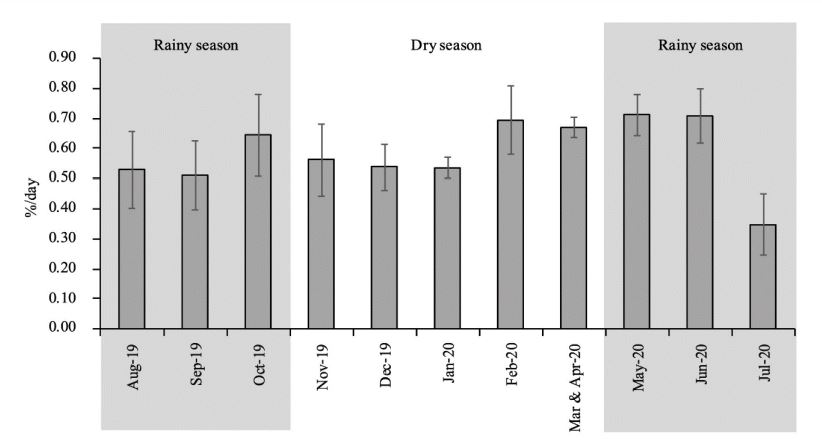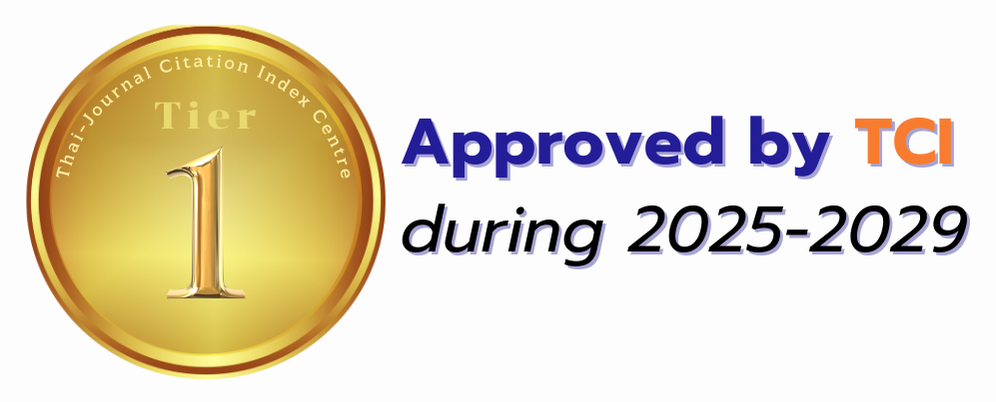Estimation of Net Primary Production of Rhizophora mucronata Plantation Using Biomass and Leaf Phenological Characteristics in a Coastal Area at Bangpu, Samut Prakarn Province
Keywords:
Biomass increment, litter production, carbon storage, sapling, mangrove plantationAbstract
Background and Objectives: Litter production is an important component for estimation of net primary productivity. However, there are few studies on the litter production of saplings in mangrove plantations. This research aimed to estimated leaf litter production by leaf phenological study of Rhizophora mucronata saplings (3-year-old), and the biomass increment was also observed in a mangrove plantation at Bangpu, Samut Prakarn Province.
Methodology: Four plots of 5 × 5 m2 were established for studying forest structure and evaluated biomass using the allometric equation developed for Rhizophora sapling. The leaf phenology was studied by using tagging method from August 2019 to July 2020. The leaf loss rate and monthly litterfall were estimated. Litter production was calculated by summing monthly litterfall. The correlation between monthly litterfall and environmental factors was analyzed. Finally, NPP was calculated by a summation of litter production and biomass increment which calculated biomass only living saplings through the study period.
Main results: The highest leaf loss rate was in May and June 2020, but the highest monthly litterfall was found in May 2020. Moreover, the monthly litterfall positively correlated with air temperature. The litter production was 0.89 ± 0.45 t/ha/yr, while, the average increment biomass was 1.91 ± 0.35 t/ha/yr. NPP in mangrove plantation ranged from 2.32–3.45 t/ha/yr which litter production was relatively high and accounted for 21.2–45.2% of NPP.
Conclusion: Leaf phenological of R. mucronata varied among period and related with temperature changes. It can be applied for an estimation of litterfall production and reflected a potential of a carbon storage in the sapling plantation.
Downloads



.png)





